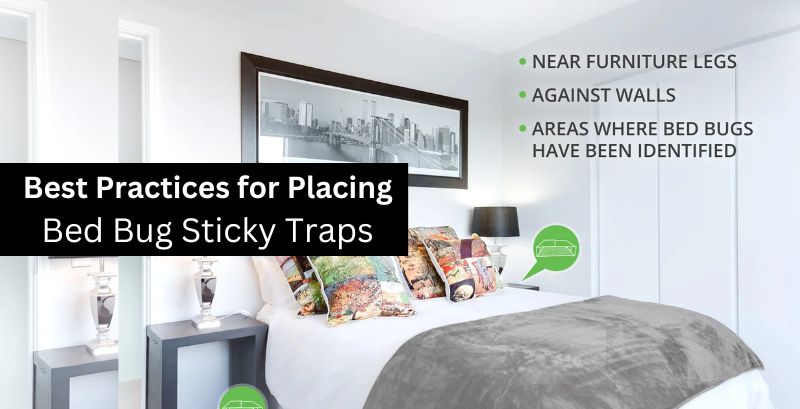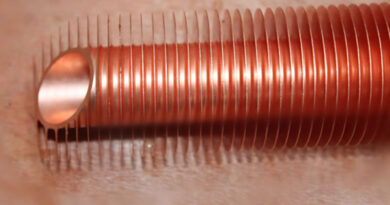Best Practices for Placing Bed Bug Sticky Traps: Targeting Problem Areas
Bed bugs are persistent pests that can infest homes and cause sleepless nights for homeowners. Detecting their presence early is crucial for effective control and prevention. The bed bug sticky trap, also known as monitors or interceptors, are valuable tools in identifying and monitoring bed bug activity.
In this blog, we will discuss the best practices for placing bed bug sticky traps, focusing on targeting problem areas. By strategically positioning these traps, you can enhance your chances of catching these elusive pests and implementing appropriate control measures.
- Understanding Bed Bug Behavior:
Before delving into the best practices for trap placement, it’s essential to have a basic understanding of bed bug behavior. Bed bugs are nocturnal insects that primarily feed on human blood.
They have a tendency to cluster in areas where they can easily access their human prey. With this knowledge in mind, we can identify the optimal locations for placing bed bug sticky traps.
II. Identifying Problem Areas:
The Bed:
The bed is the primary harbor for bed bugs, as it provides easy access to their food source. Place sticky traps near the legs of the bed frame, both at the head and foot ends. Ensure that the traps are not touching the wall or any bedding material.
Wall Junctions:
Bed bugs have a propensity for traveling along the walls. Install sticky traps near the baseboards, especially in areas close to the bed or furniture. Focus on corners and gaps in the molding, as these areas are frequently favored hiding spots for bed bugs.
Electrical Outlets:
Electrical outlets provide easy access points for bed bugs to move between rooms. Place sticky traps adjacent to outlets, both above and below, to capture any bed bugs attempting to navigate through these routes.
Cracks and Crevices:
Bed bugs are masters at hiding in small cracks and crevices. Inspect your home for any visible cracks or gaps in walls, flooring, or furniture. Pay close attention to areas near the bed, furniture, and baseboards. Place sticky traps near these openings to capture bed bugs attempting to access or escape from their hiding spots.
Headboards and Bedside Furniture:
Bed bugs often infest headboards, nightstands, and other furniture close to the bed. Examine these areas carefully for any signs of bed bug activity, such as dark spots, shed skins, or live bugs. Place sticky traps near the edges or legs of the headboard and any bedside furniture to intercept bed bugs that may be hiding or traveling between these locations.
Laundry Areas:
Bed bugs can also infest laundry areas, especially if clothes or bedding are piled up or left in a cluttered state. Inspect your laundry area for any signs of bed bug activity, such as fecal stains or shed skin. Place sticky traps near laundry baskets, hampers, or any other storage areas to capture bed bugs that may be hiding in or around these locations.
Cluttered Areas:
Bed bugs are attracted to cluttered environments as they provide numerous hiding places. Install traps near piles of clothes, books, or any other cluttered areas. Be sure to avoid obstructing the traps with the clutter itself.
III. Proper Trap Placement Techniques
Level with the Ground:
Ensure the traps are placed flat on the ground or on a hard surface, making it easier for bed bugs to crawl onto them. Avoid tilting or propping the traps, as this may reduce their effectiveness.
Avoid Chemical Interference:
Keep the traps away from areas where insecticides or repellents have been applied. Chemical residues can deter bed bugs from approaching the traps, rendering them less effective.
Multiple Traps:
Consider using multiple traps in each problem area to increase the likelihood of capturing bed bugs. Placing several traps in close proximity can create a trap barrier that intercepts bed bugs attempting to move between hiding spots and their food source.
Travel-Related Areas:
If you have recently traveled or had visitors staying overnight, it’s crucial to be vigilant about bed bug infestations. Place sticky traps near luggage, travel bags, or guest sleeping areas to detect any potential hitchhiking bed bugs.
Pet Resting Areas:
Bed bugs can also infest pet bedding and resting areas. If you suspect bed bugs may have been introduced through your pets, place sticky traps near their sleeping areas, crates, or other spots where they spend significant time. Opt for a bed bug sticky trap that is safe around pets as well as children.
Regular Inspection:
Inspect the traps regularly, preferably once a week, to check for bed bug activity. Look for live bed bugs, shed skins or fecal stains. If you find evidence of bed bugs, promptly implement appropriate control measures.
Professional Assistance:
If you’re dealing with a persistent or severe bed bug infestation, it may be beneficial to seek the assistance of a professional pest control service. They have the expertise to accurately place traps and implement comprehensive treatment strategies based on the unique circumstances of your home.
Conclusion
Placing a bed bug sticky trap strategically is a fundamental step in detecting and monitoring bed bug infestations. Increasing the likelihood of early detection can be achieved by focusing on specific problem areas where bed bugs tend to hide or move.
Remember to consider bed bug behavior and use proper trap placement techniques for optimal results. Regular inspection of traps is crucial for timely intervention. By incorporating these best practices, you can effectively combat bed bugs and safeguard your home from these troublesome pests.




